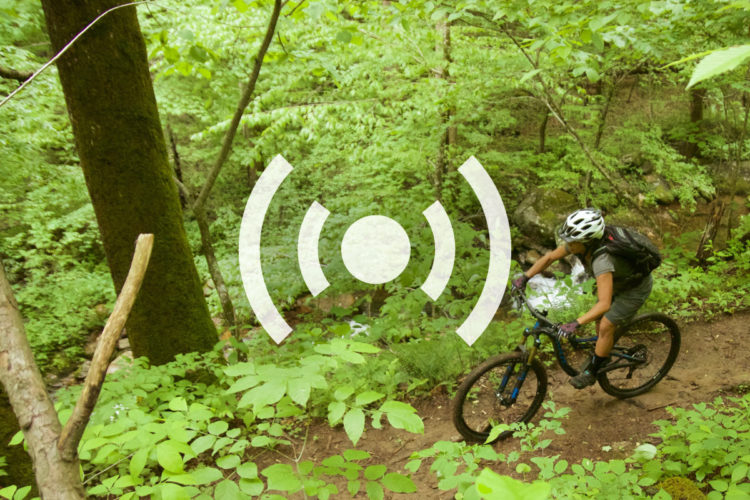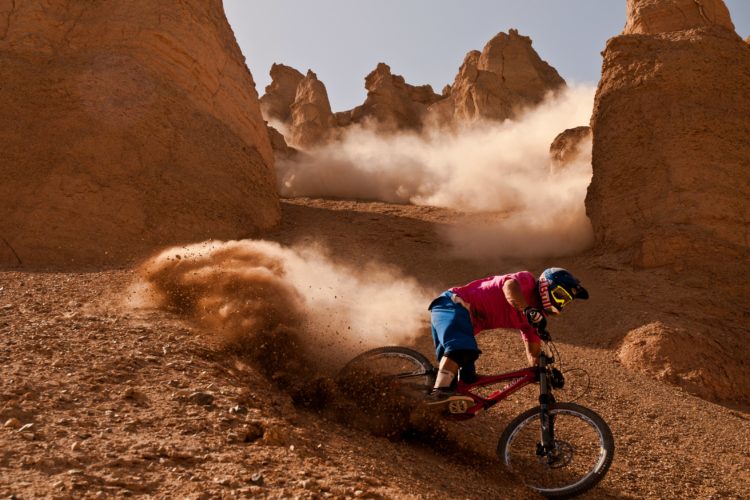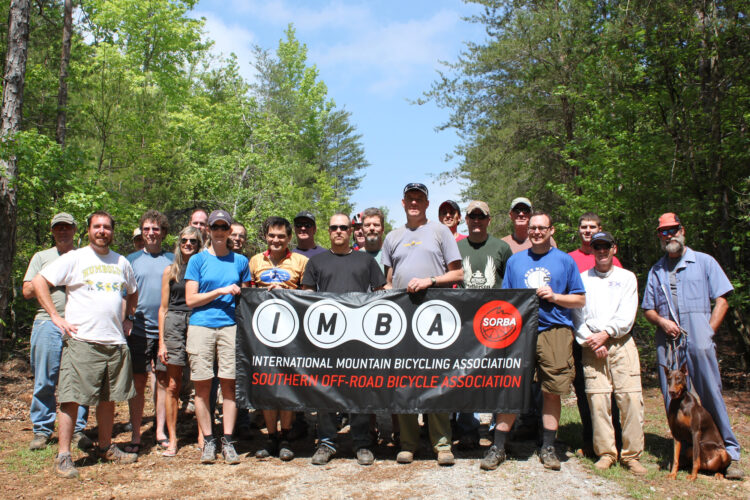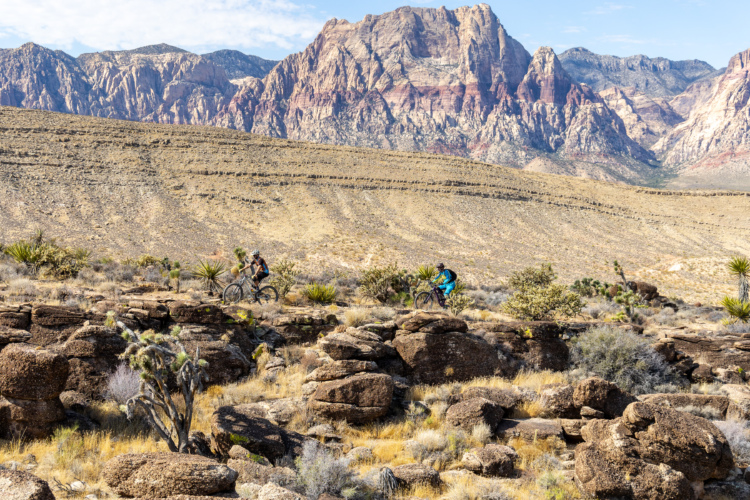Editor’s Note: The opinions expressed in this commentary are Chris Daniels’s alone and do not necessarily represent the opinions of Singletracks.com.
Enough whining already! Stop berating politicians and land managers for avoiding a fair public process, an absence of bipartisanship, unilateral decisions, dismissing scientific data leading to blind edicts preventing, prohibiting, and pilfering our trails under pretenses that mountain biking harms the environment more than other forms of trail use until…
…we put ourselves under the microscope.

PC: Thomas Le Ngo via Flickr.com Creative Commons License (no changes made)
The issue isn’t whether or not mountain biking degrades a trail or impacts the environment in some harmful way, but to what extent it does and how much control YOU have over it. While the impacts of off-road biking have been shown to be equal to (and according to some research, less than) hiking, it is dually important to develop and encourage a certain self-awareness to identify, break, and prevent poor but avoidable riding behaviors to mitigate environmental damage.
The International Mountain Bicycling Association (IMBA) has identified 6 avoidable forms of harmful environmental impacts caused by all types of trail use:
- Disruption of wildlife
- Degradation of water quality
- Soil compaction
- Erosion
- Muddiness
- Loss of vegetation
The following party fouls are real-trail examples of how poor technique, ignorance, and plain laziness can degrade trail quality and extend damage to the surrounding environment, along with some solutions. These cases also happen to be what anti-off-road extremists will include in their armamentarium to shut us down.
Stop Riding Dirty
Your bike and clothing can carry and transplant unwanted, invasive, non-native plant seeds, which may compete and displace naturally-occurring vegetation. Between rides, wash you, your clothes, and your bike, you filthy animal!

Stop Roosting Corners
…unless they’re made for it. Coming in hot through a corner without bank or berm will force you into a brake-mashing skid, causing trail widening and harm to bordering vegetation. I used to think if enough people came skidding through a fast corner, a berm would naturally form–but unless a berm is properly built, a naturally-occurring one prevents proper drainage and is only displaced soil, which is difficult to supplant. Get with your local trail building and maintenance crew and advocate for the construction of an appropriately-built berm or other means of lessening the impact while providing enjoyment.
Stop Riding Around
- Fallen trees: tree fall or other large by-products of wind, rain, and freeze obstruct passage, encouraging off-trail circumvention which destroys vegetation that is difficult and costly to recover. When safe, hoist your bike up and over the fallen log. If going over the tree requires olympic-level feats of skill, do what you have to to get around, but contact the appropriate authorities for removal ASAP.

- Puddles: from time to time, you’ll come across a low-lying, compacted, cupped, and poorly-drained patch collecting water. Do you ride around or through the puddle? Although you’ll probably spray yucky brown stuff on your new socks that would’ve otherwise looked fresh had it not been for that one puddle, the answer is to ride through it. Riding through may deepen the rut and further existing damage, but riding on the fringe of the puddle not only widens the hole, but widens the entire trail, which is no bueno. In this case, there seems to be no way to not cause more damage, but you lessen the impact by choosing the lesser of two evils. Make aware those who maintain the trail of chronic puddles. A simple gravel/soil mix can often remedy the problem.

- Technical sections: …or features beyond your skill level and/or comfort. Whether you’re new to mountain biking, racing, or beat from a long day in the saddle, don’t compromise the trail’s integrity by opting for the path of least resistance. This type of trample is among the worst crimes of bike vs. nature as it widens the trail, destroys vegetation, and augments the erosive surface. If you’re not up to the challenge, dismount and walk your bike through the section or, better yet, session it. Take some time and practice on that one section you’ve always skirted until you dominate it.

- Water bars: skirting around a water bar creates a path of run-off that defeats the very purpose of the bar’s existence. Water bars can be an annoyance when climbing, but also present an opportunity to develop more technical skill.
Stop Riding in Mud
It’s one thing to find yourself in mud, but it’s another to consciously make the decision to ride in known muddy conditions. Trampling muddy trails renders them less usable and very costly to fix after they dry. Trails suffer from widening, vegetation loss, and erosion as riders deviate from the intended path to less muddy ground. A muddy trail is less cohesive, fragile, and sick (not in the “sick drop, bro” way, but the coughing/sneezing kind). Don’t ride in the mud!
Stop Riding Fall Lines
A fall line, as it relates to mountain biking or skiing, is a natural downward course, the steepest possible line on a given descent, the least sustainable type of trail in existence, and not fun to ride anyway. By their vary nature, fall lines suffer from ever-present erosive damage that is greatly compounded from soil displacement and trail widening when trampled by users. The International Mountain Bicycling Association advises that a trail’s steepness should not exceed half the grade of the hillside nor an overall 10% grade. Studies have also shown erosion rates are significantly increased on trails with grades greater than 16 percent.
Stop Cutting Switchbacks
Besides being unbelievably lazy, shortcutting a switchback (or any other trail segment) is harmful to Momma Nature. Shortcutting trail not only damages vegetation from trample, but creates a fall line inviting erosion to further harm vegetation and damage the lower trail section from whence you cut.

Stop Littering
Ok I know, this is obvious. I doubt any of our readers are intentionally trashing our trails and when we do drop some debris, it’s probably by accident. So for this one, let’s go beyond the “not doing” and actually “do” something about it. Pick it up, even if it’s not yours. You may have to give up a KOM/QOM or come to a complete halt during a mid-mountain bomb, but we should develop the habit of picking up (some) stuff along the way. In Boy Scouts they taught us to “Leave No Trace,” but may I suggest we strive to leave our trails better than we found them.

Just this year an entire bike event was cancelled going forward due to trail trashing. As of June 2015, bikepackers will no longer enjoy the Oregon Outback due to the garbage, feces, and unburied toilet paper left along the route including crap (literally) in barns and land made especially available to riders by private land owners at the time. The small town of Silver Lake, OR even decided to ban camping altogether in the city park due to a similar shit show during the same event. Fellow riders, littering your trail will kill your trail in more ways than you know!
In Summary…
Harness the skill or get off the hill (or just get off the bike for a second). Don’t ride muddy trails, but be prepared to get a little dirty. And if you do, clean it up before the next ride. Stay in touch and work with your local trail crew to enhance and take care of your trails. And for hell’s sake, stop pooping on Mother Nature (or at least bury that…).
Your Turn: Do you know of any additional ways we can ease the impact of mountain biking on the environment? Share them in the comments section below!






















14 Comments
Jun 29, 2015
Jun 30, 2015
My pet peeve with riders is that so few wish to pitch in, even a single afternoon per year, to help with trail maintenance.
Final thought; ask before you dig a new trail. This is bog-simple respect for your fellow man / woman.
Andrew Drouin
www.SouthOkanaganTrailAlliance.com
Jul 2, 2015
equestrian when they meet us on the trail while we're fixing it for everyone.
Jun 24, 2017
Jan 18, 2016
Jun 29, 2015
Oct 18, 2015
Jun 26, 2017
Jun 29, 2015
On the other hand, as an aging tree hugger/intermediate singletrack rider/avid through hiker (age 50+) I'm of increased belief in the resilience of the natural landscape, and that bikes do significantly less damage to trails and the environment than do pack horses and mules. I appreciate the tips to be a better, more conscientious rider - but c'mon guys - don't be afraid to enjoy the ride. This ol' beautiful earth is going to outlive us all ;-)
Jan 19, 2022
There is an Enduro/DH specific trail system about 25 min from me, I go there once in a while just to ride up and back down. A lot of the side trails are so abused and eroded I don't even bother. It's not fun to ride a V-shaped ravine instead of a trail. Going back down lately has been pretty blown out as well. Hopefully it will get cleaned up. But...that is their domain, if they thrash it, they either live with it or they fix it up. It's their area to ride as they wish, I give them that. It's when they bring a bro group to other areas and trash those trail systems, and then leave and don't come back for a while...that's what is irritating.
So really, whatever trail damage around the nation happened before 2016 is probably nothing compared to what many bikes and riders are doing in 2022: using capable, stable, fast, big bikes often with 2.6 or even plus tires that are able to literally shred a trail. Power, electric or not, is addictive...use it wisely.
Jun 25, 2017
Jun 29, 2015
I tend to see it from newer or younger riders and it's a bad habit.
Jun 24, 2017
Obstacles? If a rider can't do the obstacle I would not recommend trying it and ending up with a trip to the emergency room.
Don't bring mud and seeds home with you ? Is this hobby called mountain biking?
And yes please haul all trash out with you. Do not leave it on the trail.
Some of you act like the trails are on your very own property. That's most often not the case. It's just as much the other person's trail as it is yours.
Oct 22, 2017